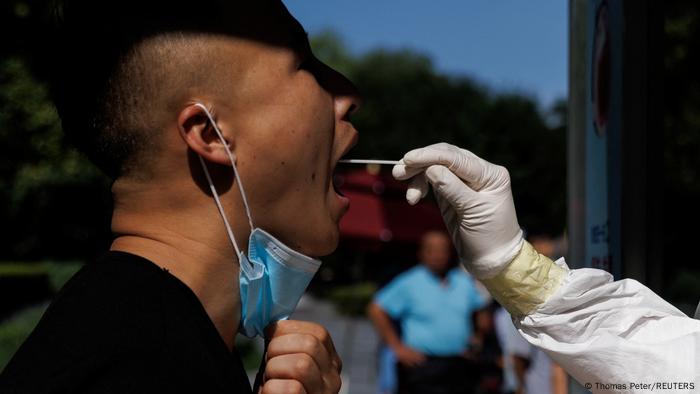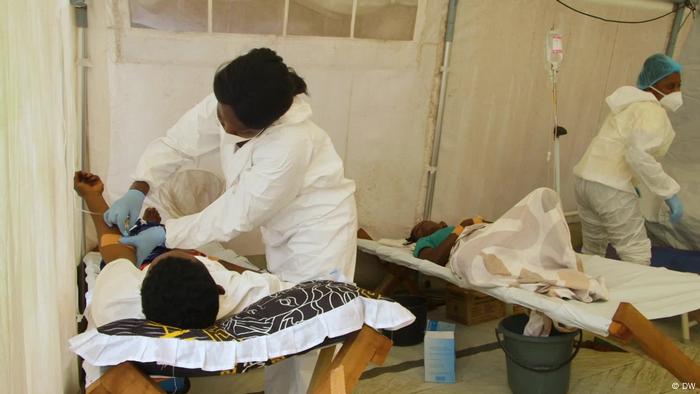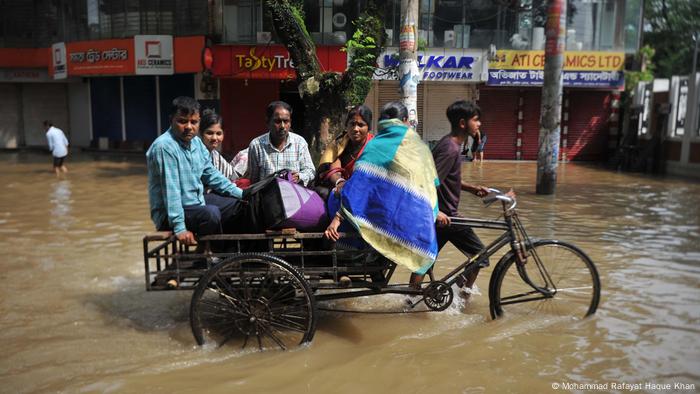Scientists are alarmed: More than half of infectious diseases are aggravated by extreme weather such as heat or floods. The immune system is weakened, diseases spread faster.

Man-made climate change is clearly promoting the spread and outbreak of infectious diseases. This is the conclusion of the authors of a study published in the scientific journal “Nature” by the University of Hawaii.
“It was really frightening to see that greenhouse gas emissions are such a massive health threat,” said Camillo Mora, professor in the College for Social Science at the University of Hawaii and lead author of the study.
In the evaluation of more than 800 scientific papers, the researchers found that 58 percent of the infectious diseases examined are aggravated by climate change. A connection could be proven in more than 3000 individual cases. According to the study, 160 of the 375 diseases examined can be aggravated by heat, 121 by floods, 71 by storms, 81 by droughts and 43 by the warming of the oceans.
“The societal upheavals of the COVID-19 pandemic provide a disturbing glimpse into a looming health crisis fueled by climate change,” the study states.
Water pollution from drought and storms
The connections between climate change and diseases are very different: water and food shortages caused by droughts can, for example, lead to wild animals venturing closer to residential areas. This increases the risk for humans of catching a disease transmitted by animals or parasites.

Full hospitals: New cholera cases only occurred in Cameroon in April
Droughts also mean that people may be forced to drink polluted water. This can lead to diarrheal diseases or cholera.
Storms, heavy rain and floods can damage roads, power lines or the sewage system and disrupt the supply of clean drinking water. Such events have previously led to outbreaks of hepatitis A and E, rotavirus and typhoid.

Drought, storms and floods can make access to clean water impossible
Heat weakens the immune system
Another point: The immune system is weakened by malnutrition caused by drought or heat waves and as a result also more susceptible to disease. Stress from other weather extremes can also weaken the immune system of humans and animals.
The researchers found, for example, that heat and lack of food in bats led to increased shedding of viruses and promoted Hendravirus outbreaks. It can cause severe encephalitis in people.
In total, the scientists identified more than 1000 different ways in which climate change could promote the outbreak of diseases.
Mosquitoes carry tropical diseases Europe
Higher temperatures can not only promote the spread of pathogens and increase the risk of infection, they also promote the spread of the carriers, the so-called “vectors”. This can be, for example, mosquitoes or ticks, which breed well in warm areas. Due to global warming, they can now live in regions where they were not previously native.
The study found more than 100 vector-borne diseases that are being exacerbated by climate change.
p>
“In Germany and Europe we are already observing the influence of climate change-related events on pathogens,” says Dr. Renke Lühken from the Bernhard Nocht Institute for Tropical Medicine (BNITM) in Hamburg told DW. The virologist is an expert on insect-borne diseases and was not involved in the study.

700 million people contract a mosquito-borne disease each year
Aggressive tiger mosquito broad itself from
The experts are particularly concerned about the spread of the Asian tiger mosquito, according to Lühken. It is currently establishing itself in large parts of Europe and “is particularly responsible for outbreaks of the chikungunya virus and dengue virus in the Mediterranean region,” the virologist continued.
“It is very aggressive and assertive. It is capable of transmitting more than 20 different viruses to humans and displacing native mosquito species. It is also very adaptable when it comes to choosing suitable breeding sites,” adds Artur Jöst, biologist and Expert on Asian tiger mosquitoes at the Institute for Dipterology in Speyer.
Zika virus and dengue fever lead to high fever, skin rash and severe headache, bone and body pain. In a 2020 study, researchers at the University of Georgia, USA, warn that by 2050 more than 1.3 billion people will live in areas where the Zika virus can spread. More than 700 million will live with temperatures that make transmission possible all year round.
“This is worrying because only a few of these pathogens have approved vaccines,” says Lühken from the BNITM. 17 percent of all infectious diseases are transmitted by vectors. Almost 700 million people contract a mosquito-borne disease every year, and more than a million die.
Reducing CO2 helps fight disease
The President of the Robert Koch Institute (RKI), Lothar Wieler, called for more attention to be paid to exotic diseases in Germany.

Germany is also suffering from drought. The Rhine is extremely low this year, ships can only sail to a limited extent.
“Climate change in Germany is leading to an expansion of the habitats for mosquitoes and ticks,” said Wieler in front of journalists. “Many mosquito and tick species can transmit viral, bacterial and parasitic pathogens,” says Wieler. “A return of malaria is also possible.”
According to the researchers of the “Nature” study, it is difficult or even impossible to prevent or adapt to the increased spread of diseases caused by climate change. The pathogens and transmission routes are too numerous for that. From their point of view, an “aggressive approach” to reducing greenhouse gas emissions is therefore necessary.

